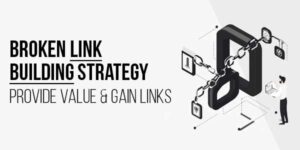
Ever spent hours crafting what you believe is the perfect blog post, hit publish, and then… crickets? You keep checking Google, searching for your article, but it’s nowhere to be found. It’s like throwing a party and nobody shows up. Frustrating, right?
I’ve been there. In my early blogging days, I’d wait weeks sometimes to see my content appear in search results. But through years of trial, error, and plenty of research, I’ve discovered methods that can dramatically speed up this process.
Today, I’m sharing everything I’ve learned about getting your content indexed and visible in search engines—often within hours, not weeks. Let’s dive in.
Table of Contents
Understanding How Search Engines Discover Content
Before we jump into the “how,” it’s helpful to understand the “why.” Search engines like Google use automated programs called “crawlers” or “spiders” that constantly roam the internet, following links from page to page.
When they find new content, they add it to their massive database (a process called “indexing”). Only after indexing can your content appear in search results.
The challenge? The internet is enormous, and Google’s crawlers can’t instantly visit every new page published. They have to prioritize. Your goal is to make your content a priority.
The Crawl Budget Concept
Yes, Google actually has something called a “crawl budget” for websites—essentially how often they’ll crawl your site and how many pages they’ll look at each time. Smaller or newer sites typically have a smaller crawl budget, which means it takes longer for new content to be discovered.
But wait, doesn’t Google eventually find everything? Well, technically yes, but “eventually” could mean weeks. And in the blogging world, that’s an eternity. You want your fresh content to be seen while it’s still relevant.
Proven Methods To Get Your Content Indexed Fast
Okay, let’s get to the good stuff. Here are the techniques I use to ensure my new blog posts get crawled and indexed quickly.
1. Submit Your URL Directly To Google
This is the most straightforward method: telling Google directly that you have new content. Google Search Console offers a URL inspection tool that allows you to submit individual pages for indexing.
Here’s how it works:
- Add your site to Google Search Console if you haven’t already
- Use the URL Inspection tool
- Paste the URL of your new post
- Request indexing
It’s not an instant process, but it typically speeds up indexing from weeks to just a few hours or days. I’ve had content indexed in less than an hour using this method!
2. Leverage Your Internal Linking Structure
Internal links aren’t just good for SEO and user experience—they’re also how Google’s crawlers navigate your site. When you publish new content, make sure to link to it from existing pages on your site.
I have a strategy where I:
- Link to new posts from my homepage (if very important)
- Add links from related blog posts
- Include them in relevant category or archive pages
This creates pathways for crawlers to discover your new content naturally. Think of it like leaving breadcrumbs straight to your latest creation.
3. Share On Social Media Platforms
While social media signals aren’t a direct ranking factor, there’s no doubt that when you share content on platforms like Twitter, Facebook, or LinkedIn, it gets noticed.
Google’s crawlers monitor social platforms, and while they don’t necessarily index content based solely on social signals, the increased attention can lead to quicker discovery. Plus, when people click through to your site, it sends signals of its own.
4. Build Strategic External Links
Getting other websites to link to your new post is like sending Google a VIP invitation. But I’m not talking about spammy link building—I mean genuine connections.
Some ways I do this:
- Reach out to colleagues in my niche and share my latest post
- Mention and link to other creators in my post, then let them know about it
- Share my content in relevant online communities (where allowed)
When quality sites link to your content, Google takes notice and prioritizes crawling those pages.
5. Use Your XML Sitemap Effectively
An XML sitemap is like a map of your website that you give to search engines. It helps them understand your site structure and find all your important pages.
Make sure your sitemap:
- Is submitted through Google Search Console
- Includes your new posts (most CMS platforms do this automatically)
- Is updated regularly
While having a sitemap doesn’t guarantee instant indexing, it definitely helps crawlers discover your content faster.
Advanced Techniques For Faster Indexing
Once you’ve mastered the basics, you might want to try these advanced strategies that have worked wonders for me.
Ping Services
There are services specifically designed to notify search engines about updates to your content. When you publish a new post, these ping services send signals to various search engines letting them know you have fresh content.
Some popular options include:
- Ping-O-Matic (which pings multiple search engines at once)
- Google’s own URL submission API (for tech-savvy bloggers)
Content Syndication
This involves republishing your content on platforms like Medium, LinkedIn, or industry-specific sites. When you syndicate properly (with canonical tags pointing back to your original post), you can leverage these platforms’ high crawl rates to get attention for your content.
Just be careful to do this correctly—you don’t want to create duplicate content issues. Always ensure the syndicated version links back to your original post as the canonical source.
Improve Your Site’s Overall Crawlability
The faster and more efficient your website is, the easier it is for Google to crawl it. Some factors that affect crawlability:
- Site speed (nobody likes a slow website, including Google)
- Clean URL structure
- Mobile-friendliness
- Minimizing crawl errors
By optimizing these technical elements, you make your entire site more attractive to search engine crawlers.

What Not To Do: Common Indexing Mistakes
In my journey, I’ve made plenty of mistakes that slowed down indexing. Learn from my errors so you don’t repeat them!
Publishing Thin Content
Google is increasingly smart about identifying low-quality content. If your posts are short, poorly researched, or don’t provide real value, Google might not prioritize them for indexing—or might not index them at all.
Always ask yourself: “Does this content genuinely help my audience?” If the answer is yes, you’re on the right track.
Ignoring Mobile Optimization
With mobile-first indexing, Google primarily uses the mobile version of your content for indexing and ranking. If your site isn’t mobile-friendly, you’re putting yourself at a significant disadvantage.
Creating Dead Ends
Pages with no internal links pointing to them are called “orphan pages.” Since crawlers primarily navigate through links, these pages might never be found. Always ensure your new content is properly integrated into your site structure.
Real-World Scenario: My Indexing Success Story
Let me share a personal experience that transformed how I approach content indexing.
Last year, I published a comprehensive guide on a timely topic. Knowing it would be relevant for only a short period, I needed it indexed quickly. Here’s what I did:
- Pre-optimized the post with proper SEO elements before publishing
- Submitted the URL to Google Search Console immediately after publishing
- Shared it on all my social media channels
- Sent emails to three colleagues in my niche who I thought would find it valuable
- Updated three existing related posts on my site to link to the new guide
The result? The post was indexed in under two hours and started receiving organic traffic the same day. Within a week, it was ranking on the first page for several target keywords.
This isn’t magic—it’s a systematic approach that signals to Google that your content is valuable and worth prioritizing.
“The key to quick indexing isn’t tricking search engines—it’s making your content impossible to ignore.”
Maintaining Visibility: Beyond Initial Indexing
Getting indexed is just the first step. To maintain and improve your search visibility, you need to think long-term.
Update Content Regularly
Google favors fresh, updated content. When you regularly update your posts with new information, it signals to Google that your content remains relevant, which can lead to more frequent crawling.
I set quarterly reminders to review and update my top-performing content. This simple habit has done wonders for maintaining my search rankings.
Monitor Performance In Search Console
Google Search Console provides invaluable data about how your content is performing in search results. Regularly check for:
- Index coverage issues
- Search queries triggering your content
- Click-through rates
- Mobile usability problems
Addressing issues promptly helps maintain your content’s visibility over time.
Conclusion: Patience And Persistence Pay Off
While these techniques can dramatically speed up the indexing process, it’s important to remember that SEO is a marathon, not a sprint. Even with quick indexing, it might take time for your content to climb the search rankings.
The key is consistency. Implement these strategies with every post you publish, and over time, you’ll notice that your content gets indexed faster and ranks better.
Remember, at the heart of all these techniques is one simple principle: creating valuable content that deserves to be found. Combine quality content with smart technical practices, and you’ll be well on your way to search engine success.
What indexing tricks have worked for you? I’d love to hear about your experiences—share them in the comments!
Frequently Asked Questions (FAQs)
How long does it normally take for Google to index a new blog post?
Without any active effort, it can take anywhere from a few days to several weeks for Google to naturally discover and index new content. However, using the techniques outlined in this article, you can often reduce this timeframe to just a few hours or days.
Is it necessary to use Google Search Console for my blog?
While not technically mandatory, Google Search Console is an incredibly valuable free tool that provides insights into how Google views your website. It allows you to submit content for indexing, monitor performance, and identify technical issues—making it essential for any serious blogger.
Can social media sharing directly impact my search rankings?
Social signals aren’t a direct ranking factor, but sharing your content on social media can lead to increased visibility, more traffic, and natural links—all of which indirectly benefit your SEO efforts and can lead to faster indexing.
How often should I update my sitemap?
If you’re using a modern CMS like WordPress, your sitemap is typically updated automatically when you publish new content. For static sitemaps, you should update them whenever you add significant new content to your site.
What should I do if my content still isn’t getting indexed?
First, check Google Search Console for crawl errors or indexing issues. Ensure your content is original, valuable, and properly linked from other pages on your site. If problems persist, consider improving your site’s overall authority through quality backlinks and better user engagement signals.
Does website speed affect indexing?
While site speed doesn’t directly affect whether content gets indexed, extremely slow loading times can limit how many pages Google crawls during each visit. Faster sites typically get crawled more thoroughly and frequently.
How many internal links should I have to a new post?
There’s no magic number, but you should aim to have at least 2-3 relevant internal links pointing to your new content from other pages on your site. Focus on quality and relevance rather than quantity.
Can too many external links hurt my chances of getting indexed?
No, quality external links to authoritative sources typically enhance your content’s value. However, excessive linking to low-quality or spammy sites could potentially harm your credibility with search engines.
Should I noindex my category and tag pages?
This depends on your specific site structure. If your category and tag pages are thin, duplicate content, it might be beneficial to noindex them to focus crawl budget on your important content. However, if they provide unique value, keeping them indexed can be beneficial.
How important are backlinks for indexing speed?
While not strictly necessary for indexing, quality backlinks from authoritative sites can significantly speed up the process. When reputable sites link to your content, it signals to search engines that your content is valuable and worth crawling quickly.


















Be the first to write a comment.